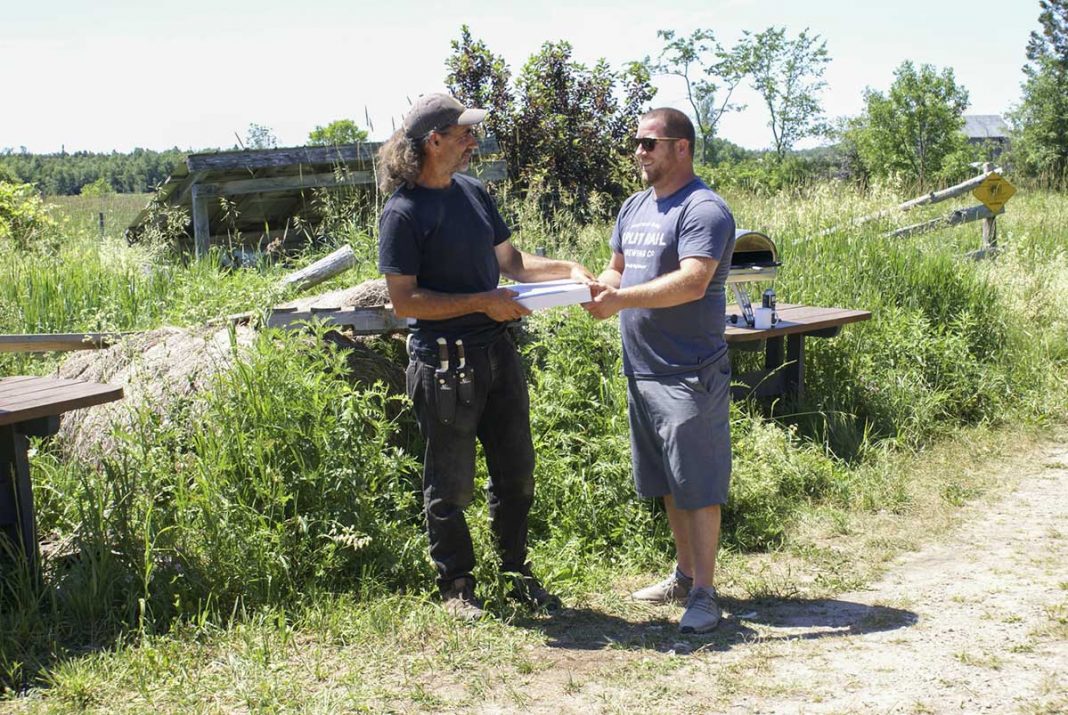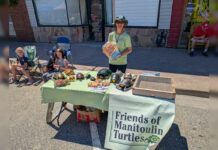MANITOULIN – Eating local not only benefits the local economy, it promotes community and environmental health while contributing to food security, especially in response to climate change and the supply and distribution shortages that have been experienced during the COVID-19 pandemic and will continue to be experienced during future climate emergencies considering our global food supply chain.
Agriculture and food production has contributed up to 29 percent of global greenhouse gas (GHG) emissions but only accounts for 10 percent in Canada, according to Canada’s National Greenhouse Gas Inventory 2020. The majority of GHG emissions in the agriculture sector are due to production, or the growing of crops and raising livestock, which is largely due to changes in land cover for agriculture use (the United Nations Framework Convention on Climate Change recognized deforestation as a key contributor but suggestions completion of a country by country analysis of the entire food chain). Other contributions are fertilizer inputs, processing, packaging, transportation, retailing, consumer use and waste generation.
The world is warming and while there have always been climate variations, the current climate crisis is linked to human activity. While system-wide structural changes are necessary to both meet our commitment to a 1.5° Celsius temperature increase, including a transformation away from fossil fuel consumption to renewable energy, how and where we build and how we transport people, goods and food is an important component of the system and thus we need to consider how our choices are going to impact the climate.
The local food movement that has spread since the early 1990s has received some pushback in more recent years. According to a report from Our World in Data, what you eat matters more than where you buy it. Their analysis showed that production of one kilogram (kg) of beef emits 60 kg of GHG while the production of one kg of peas emits one kg of GHG. However, a 2008 study published in the Journal of Environmental Science and Technology found that going meat and dairy free one day a week could reduce GHG emissions.
When you source your food locally you can see how it’s grown. You can ask the farmer personally about fertilizer inputs, feed sources and pest management. Local markets carry fresh, in-season produce that lasts longer and can have more flavour. Local growers can suggest new ways of preparing your food or tasty ways to recombine leftovers. Not only do local markets offer a variety of food products but also home baking, arts and crafts, natural soaps and skin care products, books and other items. You can reduce GHG emissions caused by fossil fuel-powered vehicles by visiting a local market for one stop shopping.
The pandemic has meant that many Island markets have not and will not open during the 2020 season but there is a selection of old and new pop-up markets and farm stands across the Island as farmers, gardeners, bakers and crafters come up with new and safe ways for Manitoulin residents to buy local.
This past Saturday, The Expositor took a drive and visited some of these markets.
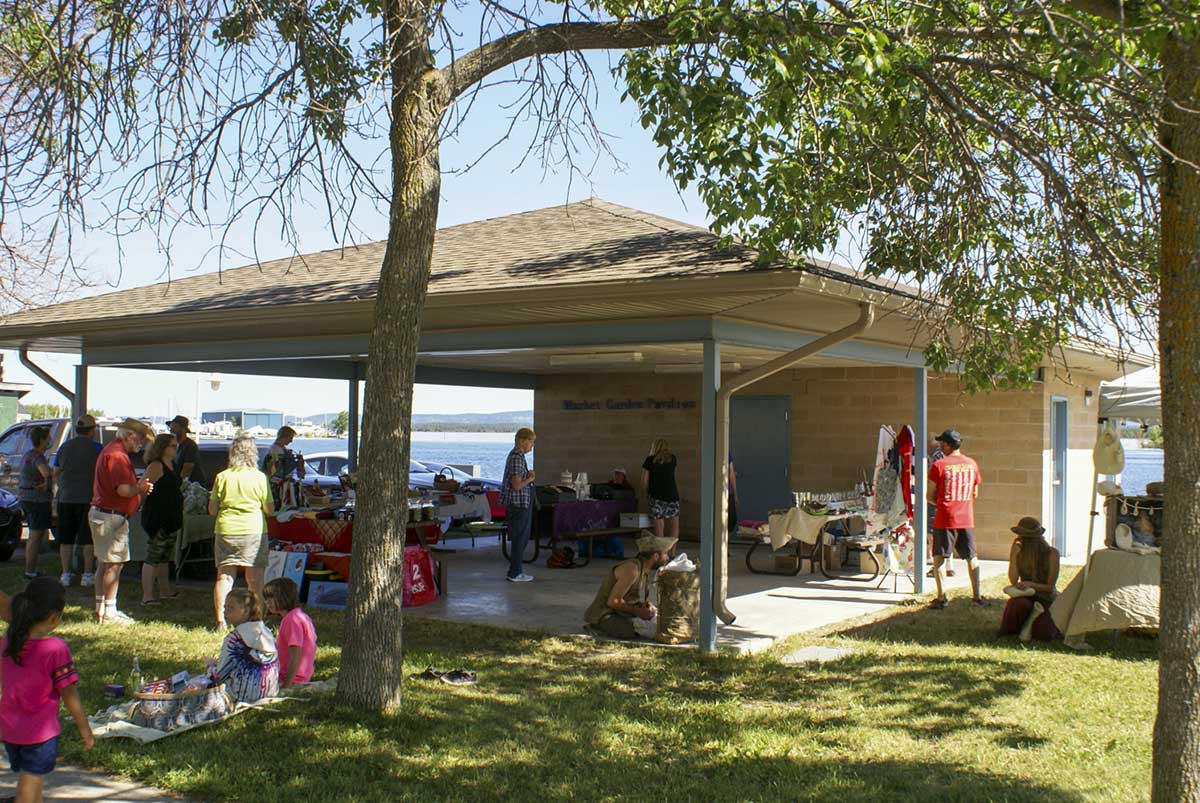
With a lovely view of the North Channel and live entertainment, the NEMI Farmers’ Market was a joy to visit. On Saturdays from 9 am until 1 pm, find natural skin care, fresh vegetables, plants, mushrooms and grow kits, books, jams and jellies, baked goods and various crafts.
The new Sandfield market is located at the old general store Thursday through Saturday from 10 am until 3 pm. Find delicious Manitoulin summer sausage, baked goods, fresh produce, homemade ice cream, rubber boots, outdoor furniture, odds and ends, and Uncle B’s line of barbecue sauces, vinegars, oils and spices as well as souvlaki, hot dogs and other delicious treats. The Beards also have in-season vegetables available at their farm gate, 39 Townline Road East in Tehkummah.
Ted Smith of Gypsy Family Farm at 1065 Union Road has just picked in-season produce and a variety of perennials on Saturdays. You can also find Richard from Buoy’s Eatery there with pizza slices, cold drinks and a selection of homemade pasta. Buoy’s sources their ingredients locally as much as they can.
There are two markets in Kagawong this year: the community market on Wednesdays as usual but with a new location at the former St. Paul’s United Church at the top of the hill, and an outdoor market at Sugar Bush Canadian Coffee House/Bare Naked Beauty on Saturdays. Visit the regular vendors from previous years and some new ones too. Baking, leather, wood craft, upcycled wood lanterns and birdhouses, beautiful handcrafted jewellery and delightfully carved walking sticks and wooden flutes. There is something for everyone. When you visit the markets, remember to maintain your social distance and though they are outdoors, consider wearing a mask.
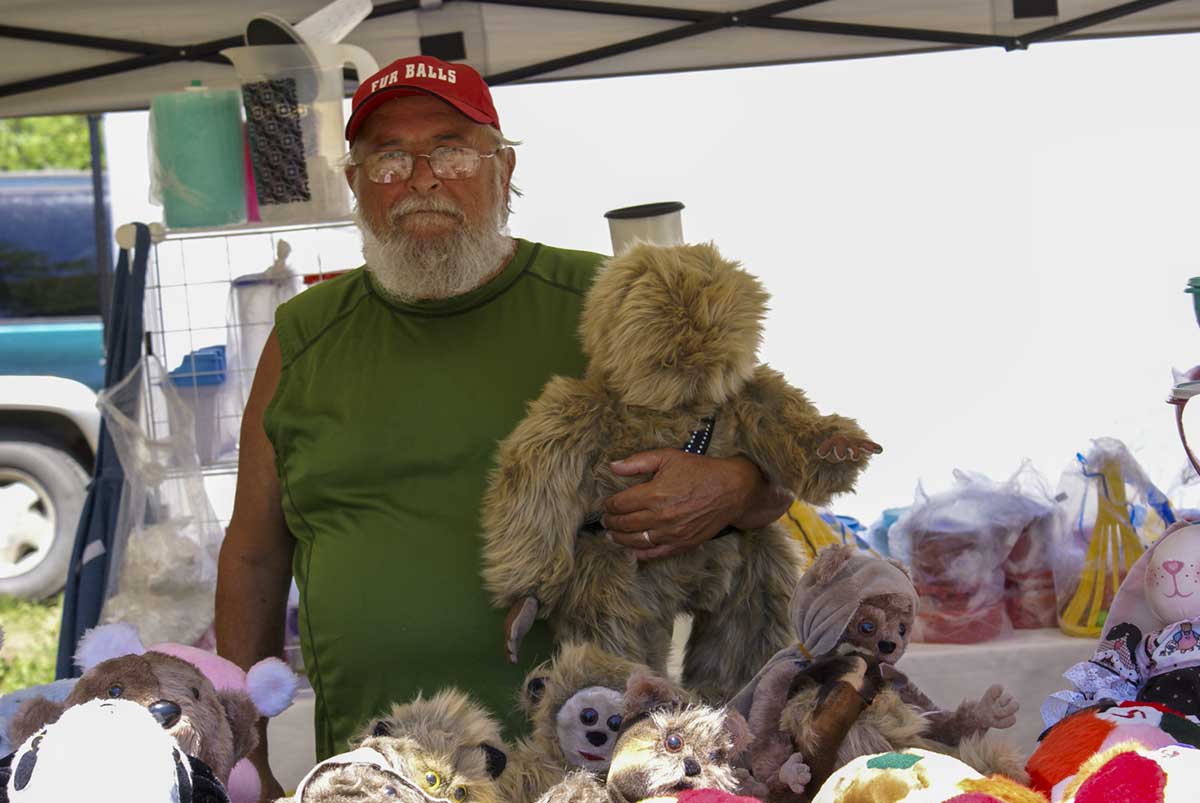
Jim from Little Current has been hand sewing fur soccer balls for 20 years. They’re fun for two to 92 years, he said, and no one gets hurt. They’re safe to use in daycares and nursing homes and everyone loves them. He also makes hobby horses (and unicorns and elephants). He recently made some Ewoks for a Star Wars-themed competition that unfortunately was cancelled due to COVID-19. All of his fur critters are unique and have their own personalities. 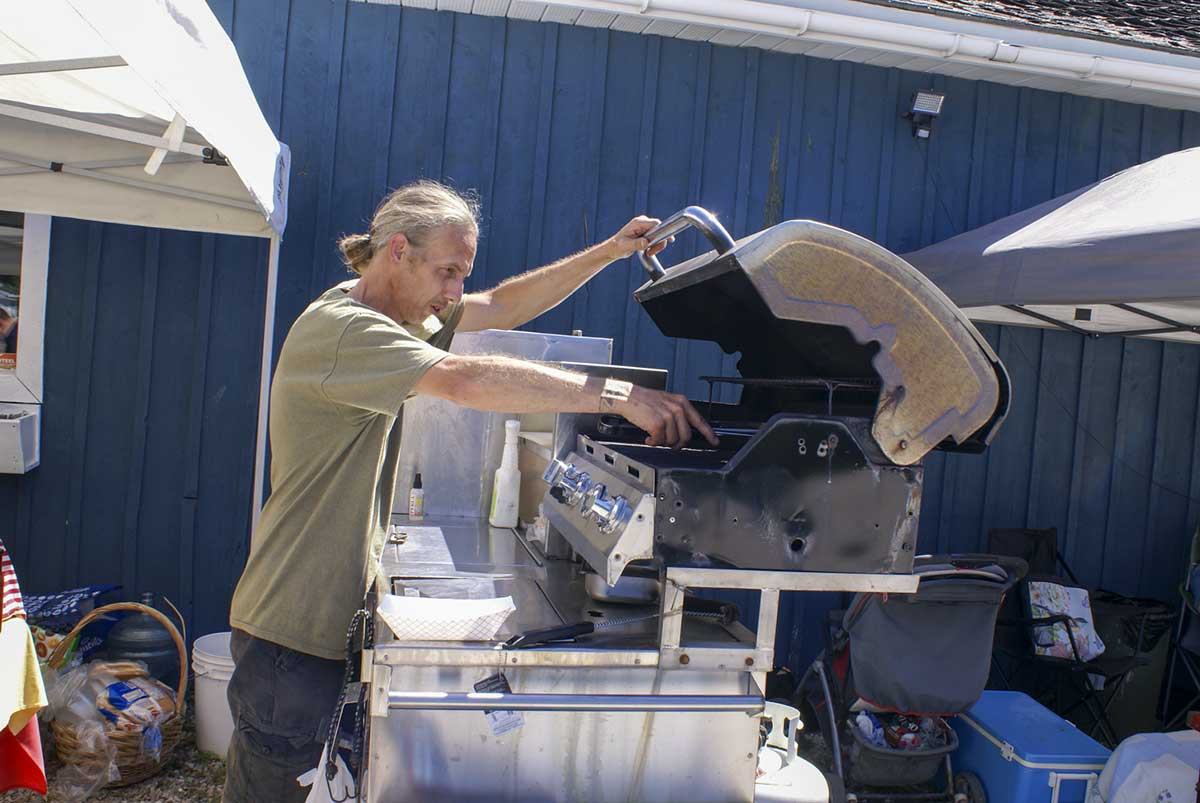
Brian from Uncle B’s is grilling up hot dogs, chicken souvlaki and Turkish kebabs at the Sandfield market this year. You can also purchase handcrafted barbecue sauces, spices, and be sure to try the raspberry vinegar.
AUTHOR’S NOTE: This is not a comprehensive list. Several Island retail stores such as The Island Jar in Little Current offer a complete selection of local products and have been offering delivery across Manitoulin during the pandemic. You can find a local food map at LocalFoodManitoulin.com or on the Community GardeningFacebook page. The website itself is a comprehensive guide for local food options and information for the Manitoulin Island community.


